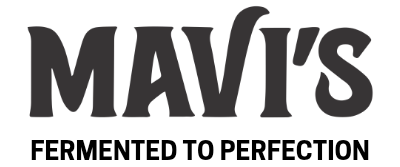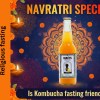Let’s be honest – fermentation is having a serious glow-up right now. While your grandma might see it as just a way to prevent food from spoiling, modern nutrition tells us otherwise: fermented foods are probiotic-packed, flavor-rich, gut-friendly superstars.
But here’s the twist – traditional fermentation methods have been used for centuries across the world. From cabbage to beets to ginger, cultures have crafted unique flavors and health benefits through fermentation techniques passed down for generations.
Cabbage – The Original Fermentation Icon
Cabbage is basically the OG ferment star.
Korea: Here, cabbage transforms into spicy, probiotic-rich kimchi – a blend of garlic, chili, ginger, fish sauce (optional), and plenty of love. Making kimchi is more than just cooking; it’s part of Korean cultural food traditions, known as kimjang, where families gather to prepare and share this nutrient-dense dish.
Eastern Europe: In countries like Germany and Poland, cabbage becomes sauerkraut – just cabbage, salt, and time. This simple yet powerful fermentation technique delivers tangy crunch, beneficial microbial cultures, and a hefty dose of Vitamin C.
Fermentation Philosophy:
- Korea: Fermentation as an art form and a family bonding ritual.
- Europe: Fermentation as a survival method for long winters, with flavor as a happy bonus.

Beets – From Tangy Drinks to Sweet Pickles
In Eastern Europe, fermented beet kvass is a tangy, slightly sweet probiotic drink enjoyed in Russia and Ukraine for centuries. Kvass is celebrated for its gut-health benefits and immune-boosting properties.
In many Western kitchens, beets are more often pickled in vinegar. While this isn’t true fermentation, the homemade fermented foods revival is inspiring more people to try wild fermentation techniques like kvass.
Fermentation Philosophy:
- Slavic regions: Kvass as a traditional, everyday probiotic beverage.
- Modern West: Pickling dominates, but wild beet fermentation is trending among health-conscious foodies.
Ginger – Spicy, Tangy, and Full of Life
Ginger bug might sound like a pet, but it’s actually a wild fermentation starter made with ginger, sugar, and water. It’s used to create naturally carbonated drinks like homemade sodas and kombucha.
In India, ginger is combined with mustard seeds, lemon, turmeric, and salt to create a tangy fermented ginger pickle – a staple in Ayurveda for its digestive and medicinal benefits.
Fermentation Philosophy:
- India: Food as medicine; pickles as nutrient-rich health boosters.
- DIY fermenters: Ginger bug as a gateway to creative probiotic beverages.

MAVI’s Pantry Fermentation Tips
At MAVI’s Pantry, we keep traditional fermentation techniques alive in modern kitchens. Here’s how to succeed:
- Use clean tools to support healthy microbial cultures in food.
- Be patient – fermentation is slow food with big rewards.
- Taste daily – flavors evolve, so let your palate guide you.
Because fermented foods = happy gut = happy you. Beyond the benefits of fermented foods, fermentation connects us to history, culture, and global flavor traditions.
CTA: Taste the World, One Ferment at a Time – with MAVI’s Pantry.




